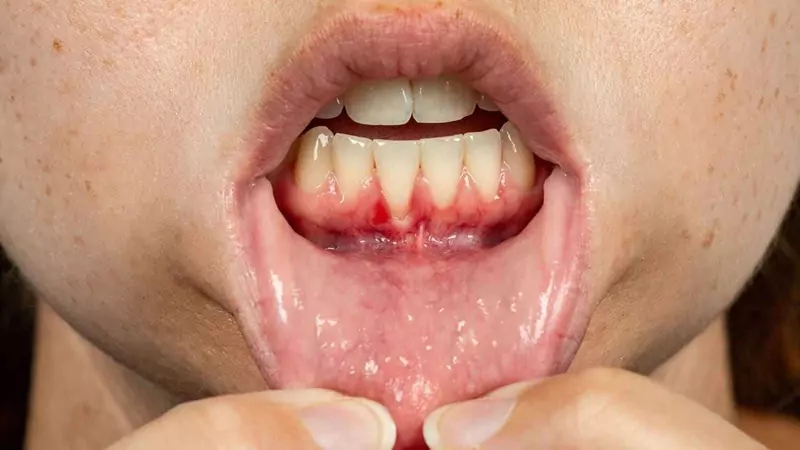
Receding Gums
Receding gums (gingival recession) is a condition where the soft tissue surrounding the teeth moves away from the area. Gum recession develops as a result of some habits (for example, incorrect tooth brushing technique), several physiological conditions, and deficiencies.
Gum recession is not a disease. But even if it is not a disease, it is a condition that requires treatment. Otherwise, the tooth and the gum tissue will become more vulnerable over time. Because when the gum tissue surrounding the tooth or its hardness is lost, it cannot protect the teeth. Therefore, receding gums is a situation that may cause the loss of the patient’s tooth.
Cause of Receding Gums
There can be many reasons for gum recession. Mineral deficiency in the body, especially calcium, is among the main causes. Another reason is hormonal disorders. This is one of the biggest causes of gum recession, especially in individuals aged 60 and over.
Women who have given birth (after pregnancy) more than once may also experience gum recession. The main reason for this is due to a vitamin deficiency. In these cases, the woman needs vitamin supplements. In this respect, women need to have dental examinations before and after birth.
Irregular brushing of the teeth, wrong brushing technique, or choosing the wrong toothbrush are also important causes of receding gums. Apart from that, if you grind your teeth while sleeping at night, the chances of gum recession increase.
Teeth grinding, pencil biting, and similar negative habits can be a factor in the development of gingival recession. Structural disorders of the gums can also trigger a gingival recession.
Signs and Symptoms of Receding Gums
A dentist can easily detect gum recession through a clinical examination. Normally, the gingiva covers the surfaces of the tooth roots. However, as a result of gingival recession, tooth-root surfaces, which are more yellowish than normal teeth, become visible.
If gum recession has occurred, bleeding may occur when a person brushes their teeth. In this case, the pain will also occur. Although the person does not have tooth decay, the teeth and gums may be sensitive to hot, cold, or acidic foods.
In areas with gingival recession, tartar may also form over time. Subsequently, a bad odor will occur in the mouth.
Gum Recession Treatment
If the symptoms of gum recession have started to appear in the person, it would be good to consult a dentist who specializes in this field. Once the conditions that cause gingival recession are eliminated, its progression can be stopped. Then the treatment starts. This period may vary depending on the treatment technique. Generally, the treatment for receding gums can vary from a week to a month.
There are various treatment methods for gum recession. Treatment methods may vary depending on the cause of the gingival recession. Apart from this, the dentist may prefer simple and protective techniques or various gingival applications, depending on the level of gingival recession.
Receding gums do not constitute an obstacle to an implant or a dental veneer. First of all, the treatment of the person’s gingival recession must be completed. Then, the procedures continue for prosthesis treatment.
How to Prevent Receding Gums?
A person can have healthy gums with regular oral hygiene. Factors such as smoking, diabetes, and crooked teeth facilitate the development of gingival recession or increase its severity if any. Therefore, as a precaution, a person should brush their teeth for 3 minutes at least 2 times a day with a suitable ADA-approved toothpaste (eg, Crest Gum Detoxify Plus, etc.) and a manual toothbrush (eg, Reach Advanced Design Medium, etc.) or powered toothbrush (eg, Oral-B Genius 7500, etc).
Receding gums can also occur under the influence of bacteria. For this reason, one should not neglect general oral care. Apart from this, the person’s diet, primarily calcium, minerals, and vitamins, is also important. In this respect, do not neglect to consume cheese, milk, and eggs regularly.
It is necessary to have the gums checked by the dentist every 6 months or at least once a year. With these controls, you can prevent the receding gums from the very beginning. In this way, apart from gingival recession, other problems that may occur in the mouth can be caught in the early stages.
References
American Dental Association: “Gum Recession”
MSD Manual Consumer Version: “Gum Recession”
National Center for Biotechnology Information: “Gingival recession: its causes and types, and the importance of orthodontic treatment”
ScienceDirect: “Gingival Recession”
